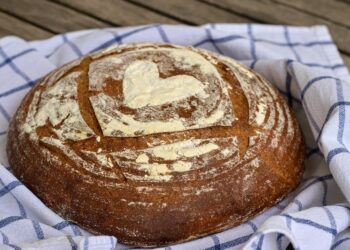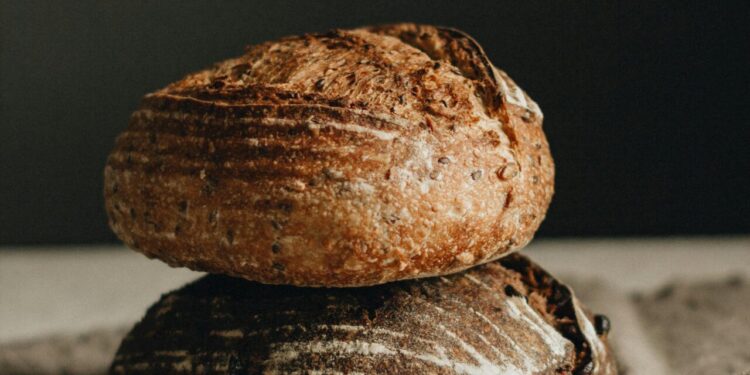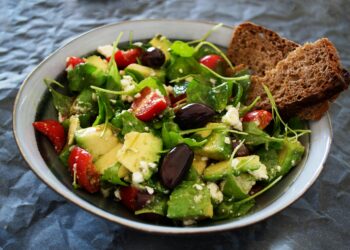Sourdough bread is a special kind of bread that requires careful consideration. Without following the right rules, you can make bad sourdough bread. Sourdough bread has a unique texture, flavor, and shelf life.
This is due to the microorganisms in the sourdough starter, which is a mixture of flour and water that naturally attracts and cultivates the microorganisms found in the air and in the flour.

Microbial Aspect Involved in Making Sourdough Bread
In the microbial aspect of creating a sour, wild yeast and lactic acid bacteria can be found on grain surfaces as well as in their surroundings. When flour and water are mixed, they produce an ideal habitat for yeast and bacteria to thrive in. The wild yeast consumes any sugar included in the flour, releasing a carbon dioxide gas. This gas causes the dough to rise, which makes it light and airy.
Lactic acid bacteria, on the other hand, transform a portion of the sugar into lactic acid. This acid provides sourdough its tangy flavor while also keeping harmful microorganisms at bay, ensuring that the bread is safe to consume. As we move further in this essay, you will learn more about other aspects included in making sourdough bread.
How Does Fermentation Enhance The Taste and Texture of Sourdough Bread?
The fermentation process begins when you combine the flour and water. Flour contains starches, which are long chains of sugar. During the fermentation process, enzymes found in flour begin to break down these long chains of sugar into simpler sugars such as glucose and maltose. These simpler sugars are what wild yeast and lactic acid bacteria can then feed on.
The type of flour used in making the dough will influence how quickly long chain starches break down. Enzyme levels vary depending on the type of flour. Whole grain flours, such as wheat or rye, often contain more enzymes than white flour. This is because they contain more of the wheat’s natural components. More enzymes mean a better breakdown of starches into sugar. This means they can give more sugars for fermentation, resulting in a more lively and tasty sourdough.
Furthermore, gluten is very necessary in sourdough production. This protein can be present in wheat flour and is responsible for the flexible network in sourdough bread. This network captures gas bubbles produced by wild yeast during fermentation. It allows the dough to rise and gives the bread structure and a chewy texture.
The Magic Behind Each Steps
Bulk Fermentation: Because the dough sits and rests during the fermentation phase, this procedure strengthens the dough. The strength of the dough is also related to the formation of gluten when flour and water are combined. Gently folding the dough during the fermentation phase strengthens the gluten and promotes good rising and texture in the bread.
Shaping: In this process, the baker prepares the dough for baking by shaping it into a tight circle; this prevents the dough from spreading out in the oven and helps the bread maintain its shape and appearance after baking.
Scoring: The purpose of this method is to raise the sourdough. Scoring means slicing the dough’s surface before baking it. This helps the bread rise uniformly, develop a beautiful crust, and take on a great shape. If you don’t score the dough, the bread may break unevenly as it bakes.
Conclusion
In conclusion, to prepare the best sourdough bread, you need to consider the sourdough starter, which should have a pleasant and tangy aroma, signaling that wild yeast and lactic acid bacteria are flourishing.
The amount of water in the dough impacts the final product, therefore adding a lot of water to give the bread open crumbs and wider air pockets. The longer you let your dough ferment, the more tasty it becomes. Fold the dough in a tight circle and score it appropriately to avoid breakage or cracking while maintaining a fantastic form.

















